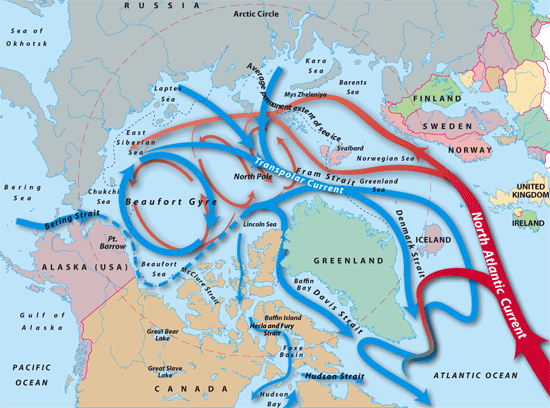Spring ice clogs up the Bering Strait, via George Riggs, NASA GSFC
Advertisement

Click to enlarge. Image: Jack Cook, Woods Hole Oceanographic Institute
Advertisement
Click to enlarge: A map of Soviet permafrost based on CIA data from 1984. Permafrost has since been melting, but it serves as evidence of that vast ice problem the Soviet Union was faced with. Via Zonu.com
Advertisement
Advertisement
From the June 1956 issue of Popular Mechanics
Advertisement
According to Philip John Pocock, who discussed Borisov's book in an anthology of massive geoengineering projects, Borisov then went on to provide the data supporting his argument. We all know how the story ends: the dam was never built, and as period newspapers noted, it likely would have had disastrous effects elsewhere in the world.But as Pocock points out, the project could have been started. Had Russia held onto Alaska, and had Borisov been closer to Stalin's inner circle, as other scientists were, it's quite possible that Borisov could have been given the okay to move forward with his plan to melt the Arctic. (Curiously, geoengineers have continued to find a friendly home in Russia, including in the inner circle of Vladimir Putin.) It's all hypothetical, of course, but it'd doubtful the United States would have wasted political capital on a Russian dam that the US already found intriguing, and which many scientists didn't think was feasible in the first place.At this point in history, there's exactly zero chance of nations rallying behind an obscenely expensive, world-changing infrastructure project like this one. We'll never know if Borisov's design would have worked. We may still see the results of a thawed Arctic, however. Russia's permafrost may shrink by as much as 30 percent by mid-century, which tracks with all the other estimates that the Arctic will be ice-free at least part of the year by 2050. So while Borisov's plan to melt the Arctic with a giant dam may have been impossible, humans have still found a way.@derektmead"When this warming up occurs, and the ice of the cold war melts, broad vistas for teamwork in warming up the eternal ice of the Arctic Ocean will open too." - P.M. Borisov